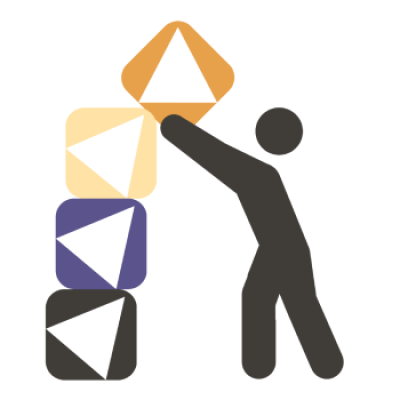Solving Trauma
Shelley Etto | Posted on |
Solving trauma is easy...and hard....and you will cry a lot.
...and it isn't deadly to cry.
Continuing from the two previous posts here and here. If you’re just landing on this page – go read those first!
You’ve just dealt with Pains. As in…Pains in your ass. You’ve just gotten a lot of stuff off your plate, and freed you up to deal with the other stuff.
…what about the Lack, Traumas you cannot do anything about?
Traumas take evaluation, deconstruction, and processing. Lacks take building and striving for something. We’re going to break it down into manageable chunks, process-able items, and buildable steps.
In a way, Traumas and Lacks and Pains are like pieces of driftwood, scraps of broken lumber, and bits of frayed rope. What’s a ladder made from? When you break them apart from the tangled mess and elephant-sized weight on your chest and put them together the right way….they can just as easily become ladders.

We're going to deal with the big guns first.
Traumas are, in general, unprocessed emotions and lizard-brain attempts at protection. The earlier they occur in our lives, the more they become ingrained into our psyche as a personality trait – but they are still solvable and correctable! The personality traits traits you have now will slowly…disappear…once you’ve solved the trauma.
This is a good thing! It allows you to grow again. Right now, the trauma is stopping that growth. Imagine who you could be when free. No longer scared of being attacked around every corner, or able to drive when your fear of driving slowly….stops…being a Thing. Soon it just becomes a thing. Then a meh. Then a “oh yeah, I used to fear that, I’ve forgotten about that.”
That’s what processed traumas turn into.
Step 1: Identifying Traumas
So let’s get back to your list. You have a list and you’ve already identified quite a few of your traumas I am willing to bet….but now? I may have reminded you of more.
Go ahead and write down any more that come to you. And assign them the same numbers as you first did, the 1-10 individual levels of stress/fear.

Step 2: Determine the location
Processing looks different for everyone when they are solving traumas.
1. Take one trauma from your list – preferably not a very big, bad one to start, a lower numbered one is best. Go back to when that trauma happened.
2. Now you’re thinking of the event but not feeling it. You’re quite possibly scared to feel it. That’s ok – not going to do that just yet. Instead…
3. That trauma event is in your head – but the feelings are existing somewhere in your body. It could be like mine, mostly centered in the center/gut, or what some people call the “heart chakra” area. Or it could be in your throat. Or on an arm. On your side perhaps, or even centered within an organ. The trauma is held where the trauma happens – and quite possibly a 2nd place in your body at the same time.
4. Place your fingers over those spots where you feel the trauma, or the tight knot, or the pressure. Look at where they are. Those are the zones to start!

Step 3: Taking a chunk out of the elephant
Take one zone you’ve identified, just the one. Now here’s the scary part.
Feel only the emotions – do not let your brain tell you anything about them. Let the wave come. Let it hit you with a force, let it drown you. Don’t hold back crying, or screaming, or breaking down. Breaking down is GOOD. You’re breaking down the trauma…not breaking down mentally forever.
You won’t die. That’s the weird part – it feels like you’re going to drown, but you never, ever do. And until you let it try to drown you, you won’t ever get through it.
When I say don’t let your brain tell you anything about the emotion – basically, don’t let your brain say “this wave means you are evil” or “You never deserved them” or “You fucked up”. Nope. Not what that emotion means whatsoever – that’s our brains trying to assign meaning to an event happening, which is what creates a trauma in the first place.
It does this to “learn” how to protect ourselves in the future against the event happening again and that “lesson” then forces us to make stupid decisions, defend our actions, and become “less than” to protect ourselves from further issues.
Instead of assigning judgement or meaning – let your brain replay the incident and let the feelings out that have been locked in that incident.
Some lessons aren’t good to learn, and must be unlearnt. This is unlearning the lesson we should have never had.
Step 4: Determine your best process(ing method).
I walk.
You may need to listen to music.
You may need to pace in a circle, or have a fidget spinner in your hands, or have a pet nearby to cuddle. Or even a teddy bear may work!
Whatever allows you to go through the wave the clearest way possible, do it. Do not use it as a distraction or a “I just need to come up for air for a moment so I will stop in the middle”. You have to learn to get through the wave – until the wave passes, without pausing the wave.

Step 5: Re-welcome the wave
No trauma has just one wave.
Once the first wave passes and you’ve cried or screamed or broke down, let your brain think about a song or just go off on it’s own tangent for a bit. Let your mind wander for 5-10 mins.
Then go look at that trauma (same place in your body) again. Let any more feelings come out, get hit by any more wave, hell even ASK the wave to hit you! Cry more, break down again! It’ll be a little less this time.
Repeat Step 5 as many times as you need until the trauma feels “done” or “numb”. That’s a good place to be in.
Step 6: Rest. Sleep. Chill.
One trauma a day only, at first! But after a few days of this – you can start doing two traumas a day, or rarely three. (Don’t go above three. Too much trauma breaking at once and your brain will develop it’s own trauma around trauma breaking. Ask me how I know.)
After doing a trauma: Take at least a 30 minute break and go watch a stupid video, a mindless thing. It’s like your brain needs to sweep aside the trauma pieces internally for a bit.
There’s only so much change a brain can do in a day. If you do even one or two traumas a day, you have done your job with your recovery.
Give yourself a treat, a dance, a pat on the back, drawing time, singing time, whatever floats your inner child’s boat!
Never devalue the power of rewarding yourself. You need it. Your Hierachy of Needs requires it.
Step 7: Repeat 1-6 until you've tackled all the traumas you can on your list...
But don’t start believing that all your issues are due to traumas. You’ve just broken the barriers…but now you’re left with sticks and bits of rope. We still have Pains and Lacks to tackle.
